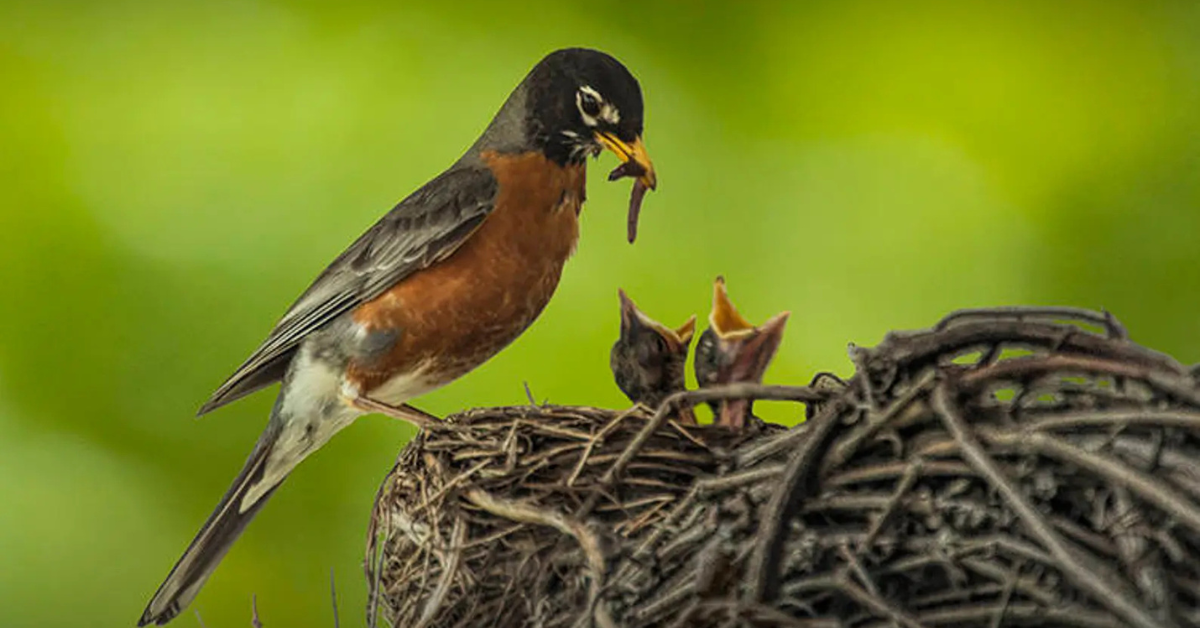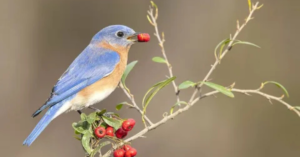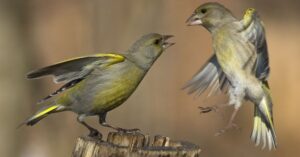Nearly 80% of baby birds fail to survive their first few weeks due to improper feeding fledglings. Understanding what do baby birds eat isimportant for the survival of these delicate creatures and also for anyone who finds themselves caring for a fledgling. In this guide, we will explore essential feeding baby birds techniques, the right types of food, and tips to ensure the healthy growth of young birds.
What Are Baby Birds?
Baby birds, often referred to as chicks, are the vulnerable yet remarkable offspring of avian species. These tiny beings emerge from eggs, encapsulated in a world of warmth and safety, dependent on their parents for survival in those critical early days.
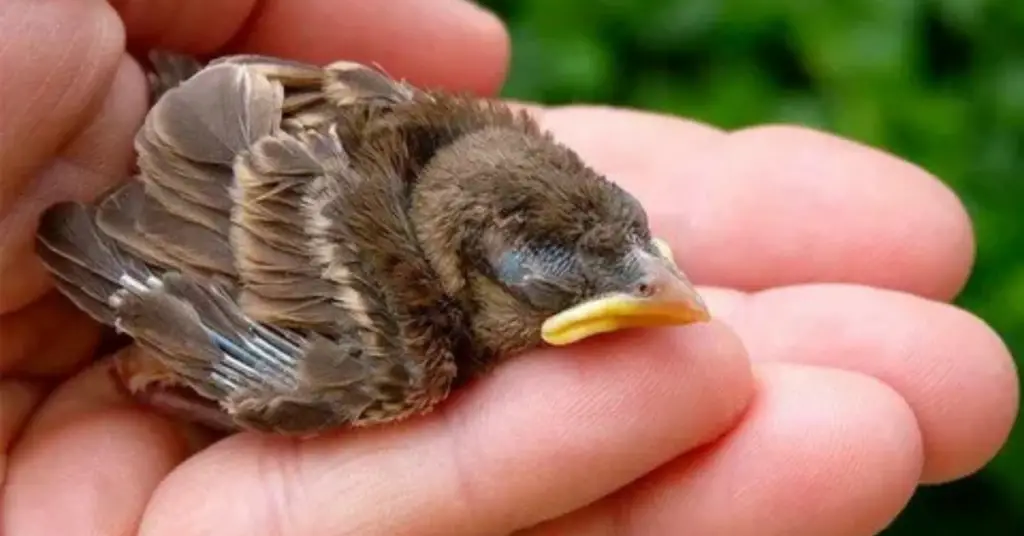
The process of hatching is nothing short of miraculous; within the confines of their shells, chicks develop intricate features like feathers, beaks, and sensory systems, all designed to prepare them for life outside.
Types of Baby Birds
Baby birds, or nestlings, come in a variety of types, each exhibiting unique characteristics shaped by their species and environment. One fascinating category is altricial birds, which are born helpless and require extensive parental care. These tiny beings emerge from their eggs with closed eyes and sparse feathers, relying on their parents for warmth, food, and protection.
Precocial birds such as ducks and shorebirds present a different developmental strategy. Born with open eyes and downy feathers, these chicks can walk and feed themselves shortly after hatching. This independence is crucial for survival in environments where threats abound.
Identifying Baby Birds and Their Species
Identifying baby birds can be both a rewarding and challenging experience, as their appearances often differ significantly from their adult counterparts. One of the most striking features to observe is their plumage; many chicks are covered in soft down feathers that may not resemble the vibrant colors of mature birds.
Baby birds often exhibit unique behaviors that can guide your recognition efforts. For example, many species will engage in begging calls that sound quite different from the melodious tunes of adults.
How Baby Birds Grow
Initially, these tiny beings emerge from their eggs blind and featherless, relying entirely on their parents for warmth and nourishment. During this critical period, the parents’ role transcends mere feeding; they also regulate the temperature of the nest, ensuring that their chicks remain at an optimal level for growth.
As the days progress, the transformation becomes increasingly visible. Chicks begin to sprout feathers, a process called molting, which equips them for eventual flight. This stage is not merely about aesthetics; feathers play a crucial role in thermoregulation and protection.
Should You Help the Baby Bird?
Many fledgling birds leave their nests to learn to fly, a natural part of their development known as fledging. In most cases, these young birds are not abandoned; they are simply honing their skills under the watchful eyes of their parents, who may be nearby. If the bird appears uninjured and is feathered, it’s often best to observe from a distance and let nature take its course.
If you find a truly injured or stranded chick, handling it requires care. First, consider contacting a local wildlife rehabilitator who can provide expert advice tailored to the species and situation. Improper intervention can inadvertently cause more harm than good, such as stress or imprinting issues where the bird may bond with humans instead of its own kind.
How to Know if the Birds Need Help
One of the first signs that a bird may need help is if it appears to be injured or unable to fly properly. Look for signs such as fluffed feathers, a drooped wing, or difficulty in hopping or walking. These physical indicators can suggest that the bird is unwell and may require intervention.
If you come across a fledgling that seems grounded, it might not necessarily be in distress; young birds often leave the nest before they can fly and are usually cared for by their parents nearby. if the fledgling is alone for an extended period, especially in a dangerous area like near traffic, it may need assistance.
Signs the Bird Needs Help:
When observing a bird, subtle changes in behavior can signal distress. One key indicator is a shift in vocalization; if your feathered friend suddenly becomes unusually quiet or overly loud, it may be expressing discomfort or fear.
Physical signs are equally important to monitor. Look for ruffled feathers, which can suggest illness or stress, as well as changes in appetite either a drastic increase or decrease can be alarming. If the bird is sitting at the bottom of its cage or has difficulty perching, these behaviors may indicate injury or weakness.
What to Do if the Bird Needs Help
If you encounter a bird that appears to be in distress, the first step is to assess the situation calmly and carefully. Observe from a distance to determine if the bird is injured, orphaned, or simply resting. If it’s a fledgling that seems to have fallen from its nest, it might be best to leave it alone; parent birds often continue to care for their young even when they are on the ground.
Once secured, provide a safe, quiet space away from pets and people. A cardboard box with ventilation holes makes an excellent temporary home. Avoid feeding the bird unless you are certain of its dietary needs, as improper food can do more harm than good.
What to Feed Baby Birds
A common misconception is that all young birds can thrive on the same diet; however, each species has unique nutritional requirements that must be met for optimal growth and health. For instance, insectivorous birds such as sparrows and robins benefit from a protein-rich diet that includes insects and larvae, while seed-eating species like finches require finely crushed seeds supplemented with fruits and vegetables to ensure they receive adequate vitamins and minerals.
Understanding Baby Birds’ Diets
The diets of baby birds is essential for anyone looking to nurture these vulnerable creatures. Unlike adult birds that may have diverse dietary habits ranging from seeds to insects, baby birds typically require a more specialized diet tailored to their developmental needs.
Baby birds often need to be fed every 15-30 minutes during daylight hours, which mimics the natural feeding rhythm established by their parents. This continuous supply of nourishment not only fuels their growth but also helps regulate their body temperature, an essential aspect of their survival.
Carnivorous birds
Carnivorous birds, often referred to as raptors, exhibit fascinating adaptations that elevate them to the top of the avian food chain. These birds, which include eagles, hawks, and owls, possess keen eyesight that allows them to spot prey from incredible distances, sometimes up to a mile away. Their powerful talons are not only designed for gripping but also for delivering lethal blows, showcasing nature’s engineering at its finest.
Many raptors have developed unique techniques tailored to their environments; for instance, the peregrine falcon is renowned for its astonishing speed during a dive, reaching up to 240 mph to catch unsuspecting birds mid-flight. In contrast, the great horned owl employs stealth and silence, allowing it to swoop down on small mammals without warning.
Herbivorous birds
Herbivorous birds, often overlooked in the avian world. These feathered foragers are key players in seed dispersal, aiding in the propagation of various plant species. For instance, when fruit-eating birds like parrots and hornbills consume berries, they not only benefit from the nutrients but also facilitate the growth of new plants by excreting seeds in different locations.
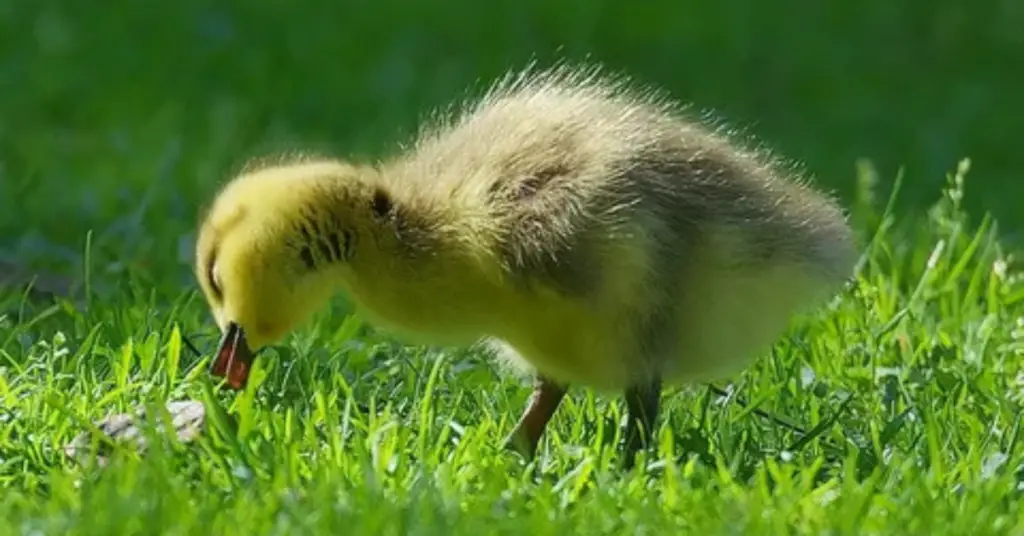
Herbivorous birds exhibit remarkable adaptations that allow them to thrive on a plant-based diet. Many species possess specialized beaks that are perfectly designed for cracking seeds or stripping leaves. Take the case of the iconic macaw, whose powerful beak can break through tough nuts and access high-energy food sources.
Omnivorous birds
Omnivorous birds exhibit a remarkable adaptability in their diets, allowing them to thrive in diverse environments. Unlike specialized feeders that rely solely on a specific food source, these birds can switch between seeds, fruits, insects, and even small vertebrates depending on seasonal availability.
Species like crows and pigeons have thrived in cities, showcasing their intelligence and resourcefulness. They often scavenge human food waste, which has led researchers to explore how these dietary changes impact their behavior and social structures.
Foods for Different Birds
Seed-eating birds such as finches and sparrows thrive on a diverse mix of seeds, but they also benefit from the occasional addition of fruits and vegetables to their diet. Fresh greens like kale or dandelion leaves can provide essential vitamins, while small pieces of apples or berries can serve as enticing treats that encourage natural foraging behaviors.
Insectivorous birds, like warblers and flycatchers, require a protein-rich diet to support their energetic lifestyles. Live insects, such as mealworms or crickets, are ideal, but dried insects can also offer a convenient alternative. Incorporating a variety of food sources not only meets their nutritional requirements but also mimics their natural feeding habits, which can be critical for breeding success and overall vitality. By catering to these unique dietary preferences, bird enthusiasts can foster healthier populations and enjoy the vibrant activity of diverse bird species in their backyards.
What Foods Are Good for Them
When feeding baby birds, it’s essential to provide a diet that closely mimics what they would naturally consume in the wild. For most species, a high-protein formula is crucial for their growth and development.
- Insects
Insects are often the star of the show. Rich in protein and essential nutrients, insects like crickets, mealworms, and caterpillars provide the perfect nourishment for growing chicks. These tiny powerhouses not only support muscle development but also contribute to healthy feather growth, crucial for fledging.
- Seeds
Seeds play a crucial role in the diets of baby birds, providing essential nutrients that support their rapid growth and development. Unlike adult birds, which often consume a diverse range of foods, hatchlings rely heavily on specific seeds that are rich in protein, fats, and carbohydrates. For instance, sunflower seeds and millet are popular choices, offering the energy required for their demanding growth phases.
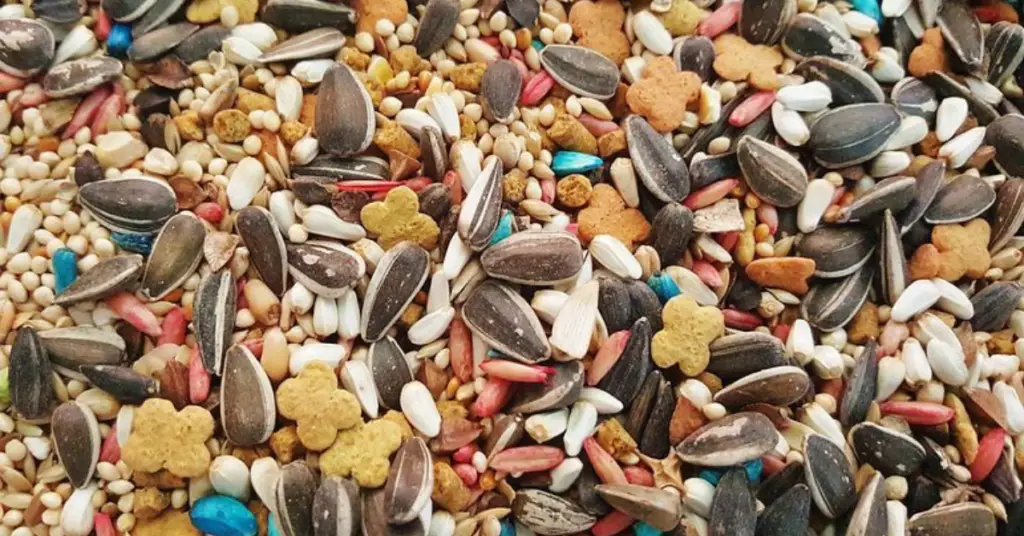
- Meat
In the wild, many species consume insects, small mammals, and other protein sources to support their rapid growth. Incorporating finely minced or pureed meat into a baby bird’s diet can help mimic these natural dietary habits and ensure they receive essential amino acids necessary for strong muscle and feather development.
- Fruit
Feeding baby birds with fruits can significantly enhance their growth and development. Fruits like mashed bananas, soft berries, and pureed apples provide essential vitamins and minerals that are crucial for young birds. The natural sugars found in these fruits not only serve as a quick energy source but also stimulate their appetites, making mealtime an enjoyable experience.
- Nectar
Nectar serves as a vital source of nutrition for many species of baby birds, particularly hummingbirds and other nectarivorous species. This sugary liquid is not only packed with carbohydrates but also provides essential vitamins and minerals that support rapid growth and development. The composition of nectar can vary significantly depending on the plant species, which in turn influences the dietary needs of the fledglings.
- Eggs
Feeding baby birds requires a delicate balance of nutrition, and eggs can play a pivotal role in their diet. Rich in protein, essential fatty acids, and vitamins, eggs provide a nutritious foundation for the rapid growth and development of nestlings. When preparing eggs for young birds,hard-boil them thoroughly to eliminate any potential pathogens, then mash them up finely to ensure they can easily ingest the food.
What Foods to Avoid
Some foods are harmful for the baby birds. So, we must avoid the things which are harmful for baby health
- Milk and Bread
Milk is often perceived as a wholesome option, but many birds, especially fledglings, lack the necessary enzymes to process lactose. This can lead to severe digestive upset and even dehydration.
Bread, often considered a harmless snack, can be detrimental to young birds. Its low nutritional value and high carbohydrate content can create more harm than good, potentially leading to malnutrition.
- Human Foods
When caring for baby birds, it’s crucial to understand that not all human foods are suitable for their delicate systems. Foods high in salt, such as chips and processed snacks, can lead to dehydration and kidney issues. Baby birds have specific nutritional needs that are best met through specialized formulas or appropriate birdseed.
- Raw Meat
Raw meat can harbor harmful bacteria and pathogens that pose a significant risk to their health, potentially leading to serious infections or illness. Instead of raw meat, consider offering protein sources that are safe and nutritionally balanced for young avians. Cooked eggs or specialized chick feed can provide the necessary protein without the associated dangers of raw animal products.
- Large Seeds
Many bird species, especially those in their fledgling stage, lack the necessary strength to crack open tough shells or the ability to digest hard seeds properly. Instead of nourishing these young birds, large seeds can lead to blockages or malnutrition, preventing them from gaining the essential nutrients they need for healthy growth.
- Avocados
The flesh of the avocado contains a compound called persin, which can be toxic to birds. While humans may enjoy the creamy texture and nutritional benefits of this fruit, it can wreak havoc on a young bird’s digestive system. Even small amounts of avocado can lead to serious health issues, including respiratory distress and even death in some cases.
- Caffeine and Alcohol
Caffeine, commonly found in coffee, tea, and chocolate, can be extremely toxic to these young creatures. Even small amounts can lead to increased heart rates, hyperactivity, and potentially fatal consequences.
Alcohol can disrupt metabolic processes and lead to severe health issues, including respiratory failure and neurological damage. Baby birds are particularly vulnerable because their bodies are still developing and cannot process alcohol effectively.
Tips for feeding baby birds
Feeding baby birds can be a rewarding yet delicate task that requires attention to detail and a gentle approach.
- Identify the Species
Different species have varied dietary requirements; for instance, songbirds typically thrive on a diet rich in insects, while seed-eating birds, like finches, require crushed seeds or specially formulated chick feed. Take a moment to observe their characteristics note the size, color patterns, and beak shape as these can offer significant clues about their specific needs.
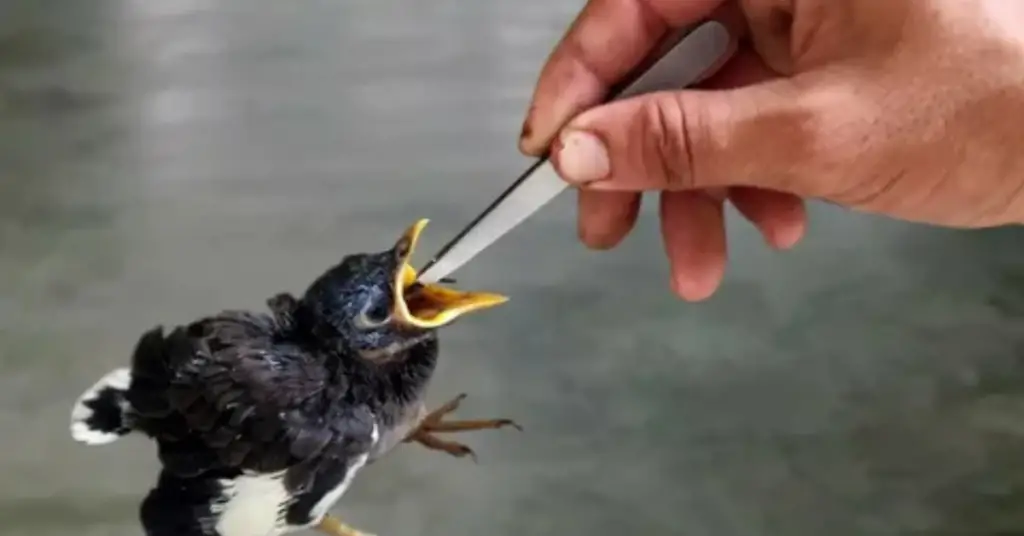
Once you’ve identified the baby bird, tailor its feeding regimen accordingly. For insectivorous chicks, consider sourcing soft-bodied insects like mealworms or crickets, which are easier for them to consume. If you’re caring for a seed-eating species, blending seeds with water to create a mush can make it more digestible for their delicate systems.
- Contact Wildlife Experts
Insectivorous birds thrive on a diet rich in protein from insects, while seed-eating species will need a mix of seeds appropriate for their age and size. Always ensure that the food is fresh and appropriately sized to prevent choking.
It’s also essential to mimic natural feeding behaviors. Instead of simply placing food in front of them, consider using tweezers or a syringe to offer small amounts at a time, similar to how parent birds feed their young.
- Use of suitable tools
When it comes to feeding baby birds, using the right tools can make all the difference in ensuring their health and safety. A syringe or dropper is often the most effective way to deliver food, allowing for precise control over the amount given. Opt for a syringe with a soft tip to prevent injury to delicate beaks, and always ensure it’s clean and sanitized before use.
- Hygiene is essential
Before you even think about preparing food, ensure that your hands, utensils, and feeding tools are impeccably clean. Bacteria can be particularly harmful to young birds, whose immune systems are still developing. A simple yet effective practice is to use a mild soap solution to clean feeding dishes and syringes, followed by thorough rinsing with warm water to eliminate any soap residue.
A clean, quiet space free from potential predators or disturbances can significantly reduce stress for both you and the birds. After each feeding session, it’s wise to remove any leftover food promptly; stale or uneaten food can attract unwanted pests and contribute to unsanitary conditions.
Conclusion
Successfully feeding fledglings requires a careful understanding of their nutritional needs and feeding habits. By providing the right types of food, such as insects, soft fruits, and specially formulated bird feeds, you can ensure that these young birds receive the essential nutrients they need for healthy growth and development.
FAQ’s
What is a fledgling?
A fledgling is a young bird that has recently developed feathers and is learning to fly, typically still dependent on its parents for food and care.
Is it safe to raise a fledgling by hand?
While it is possible to raise a fledgling by hand, it requires significant time, effort, and knowledge about their specific needs. It’s often best to seek help from professionals.
- How To Keep Bees Away From Hummingbird Feeders - March 20, 2025
- How To Attract Owls To Your Yard - March 11, 2025
- Breeding Season For Wild Birds - March 9, 2025
